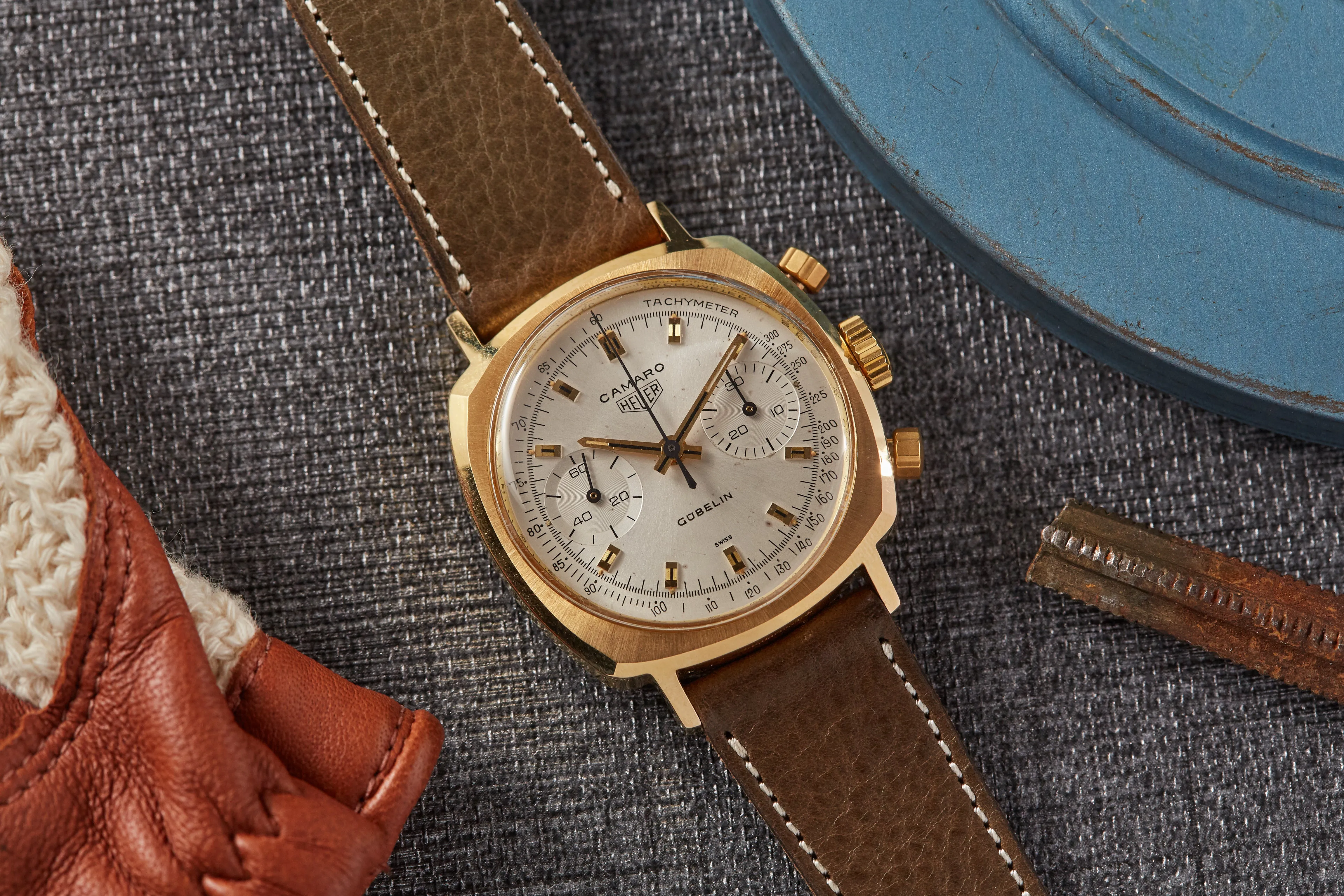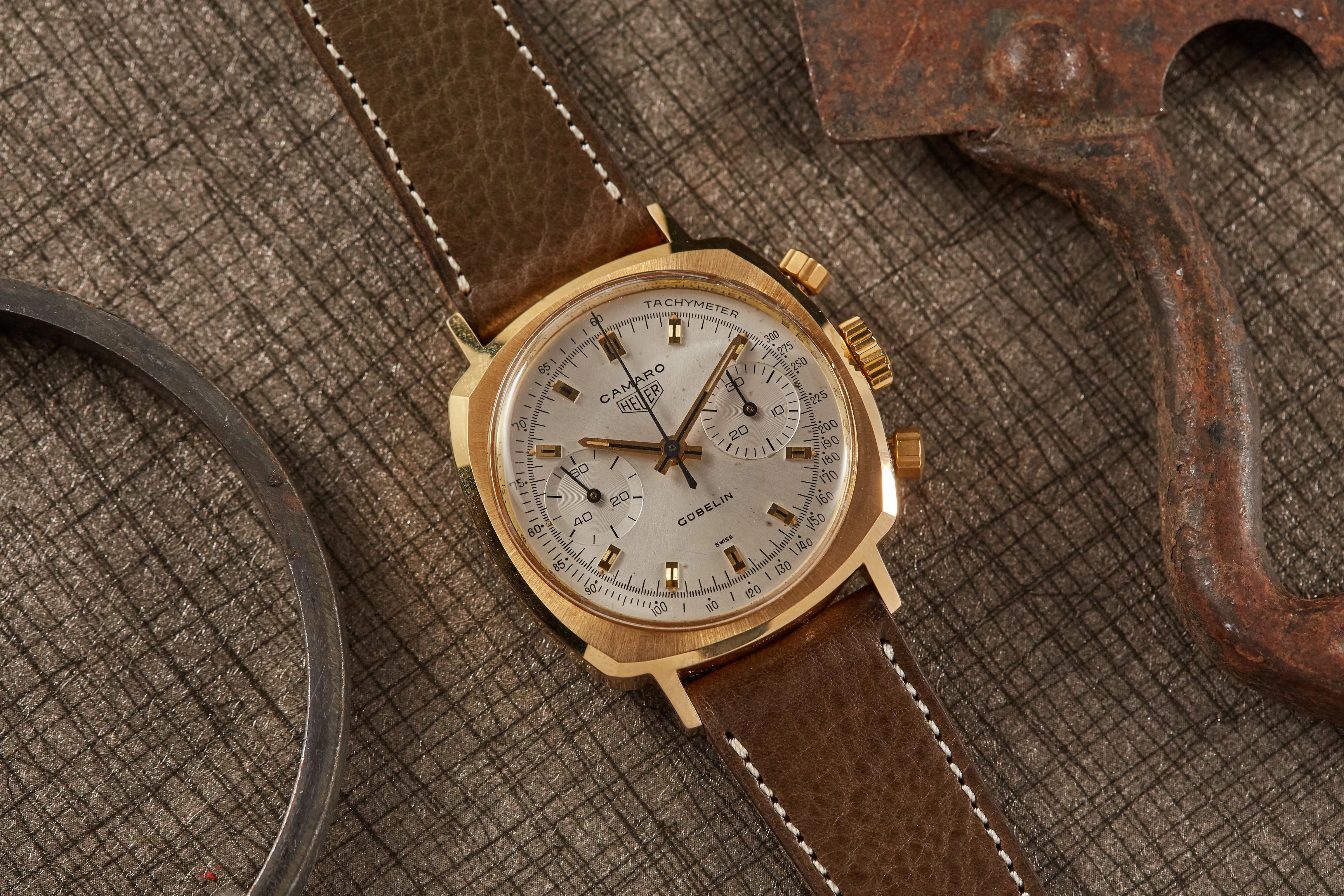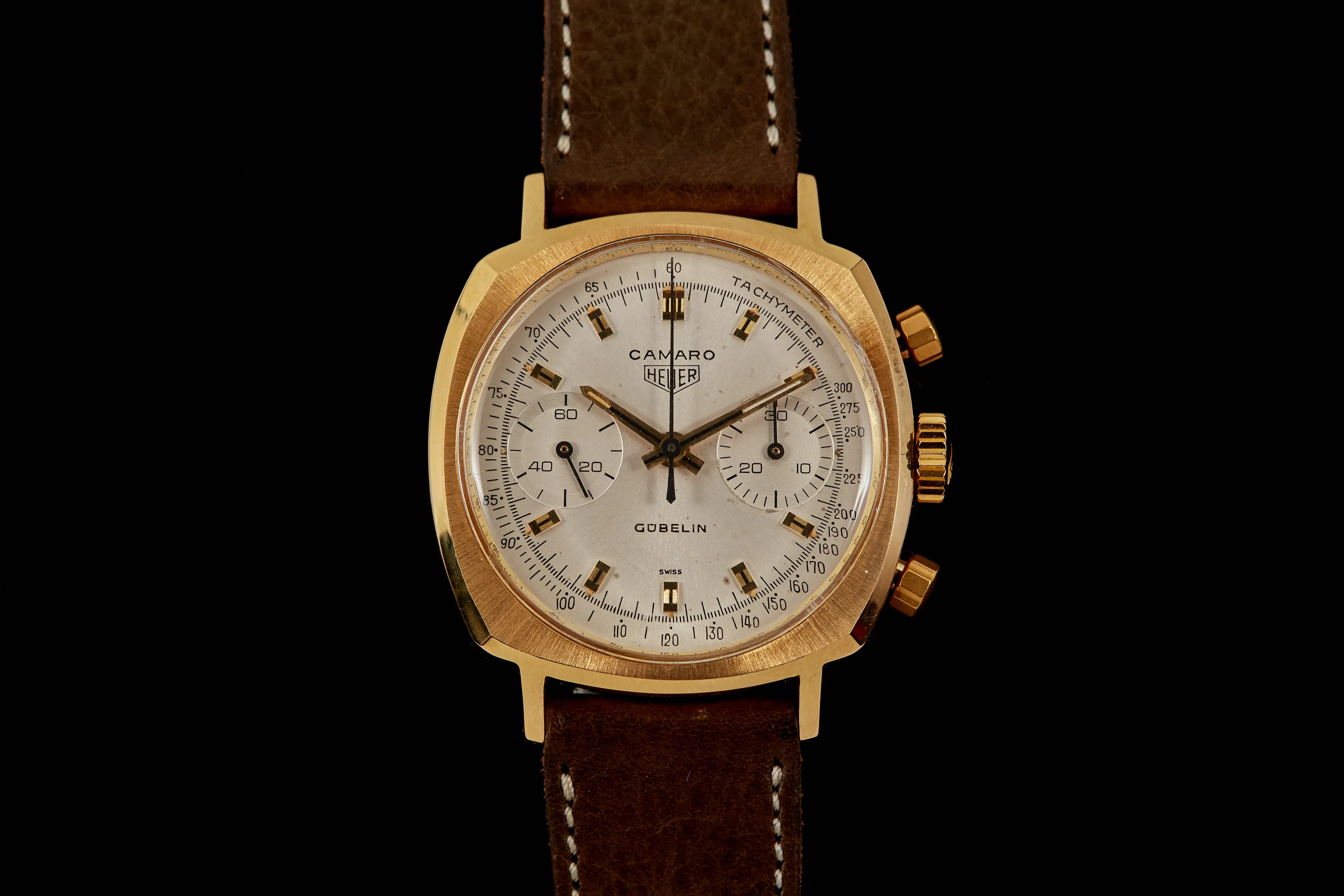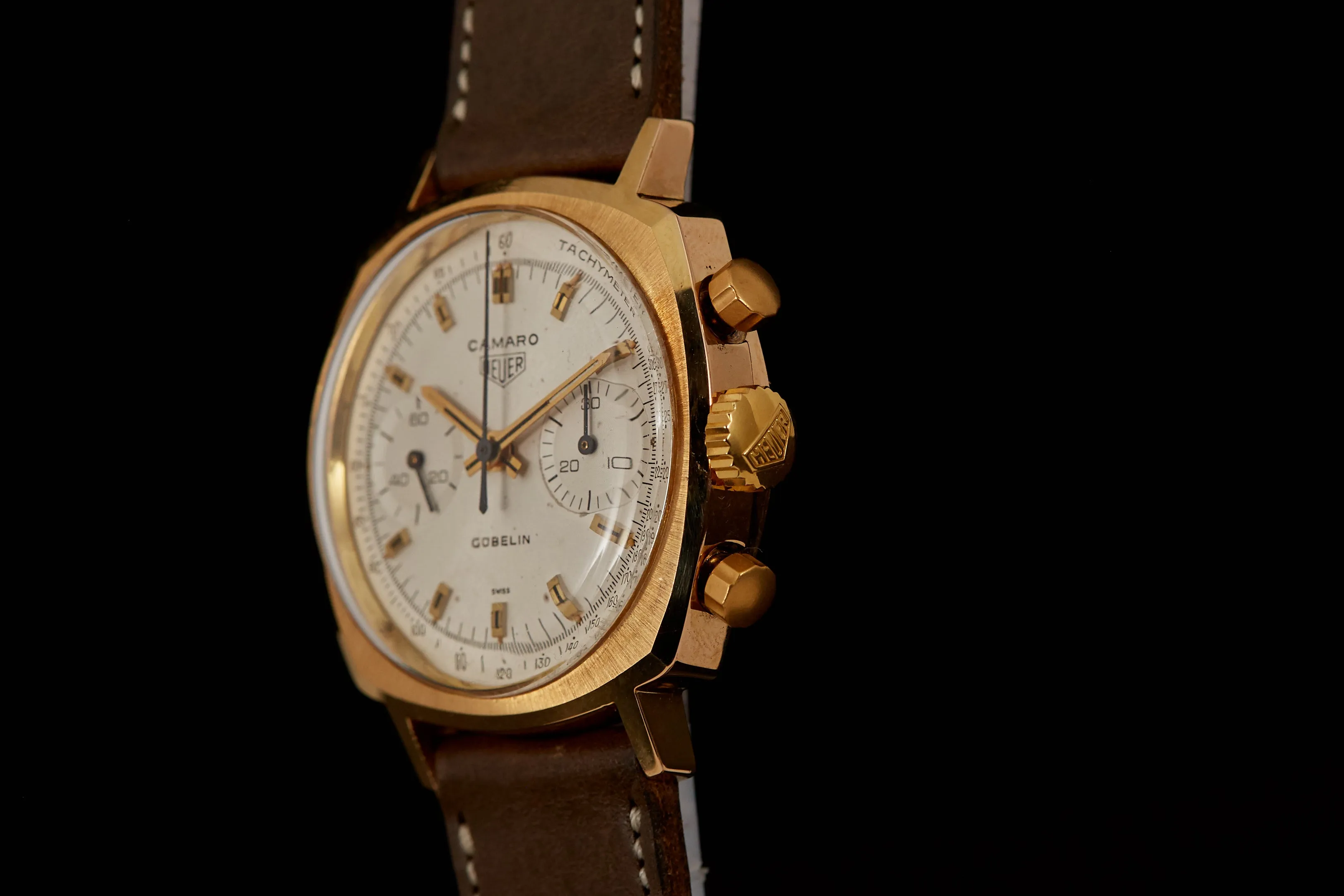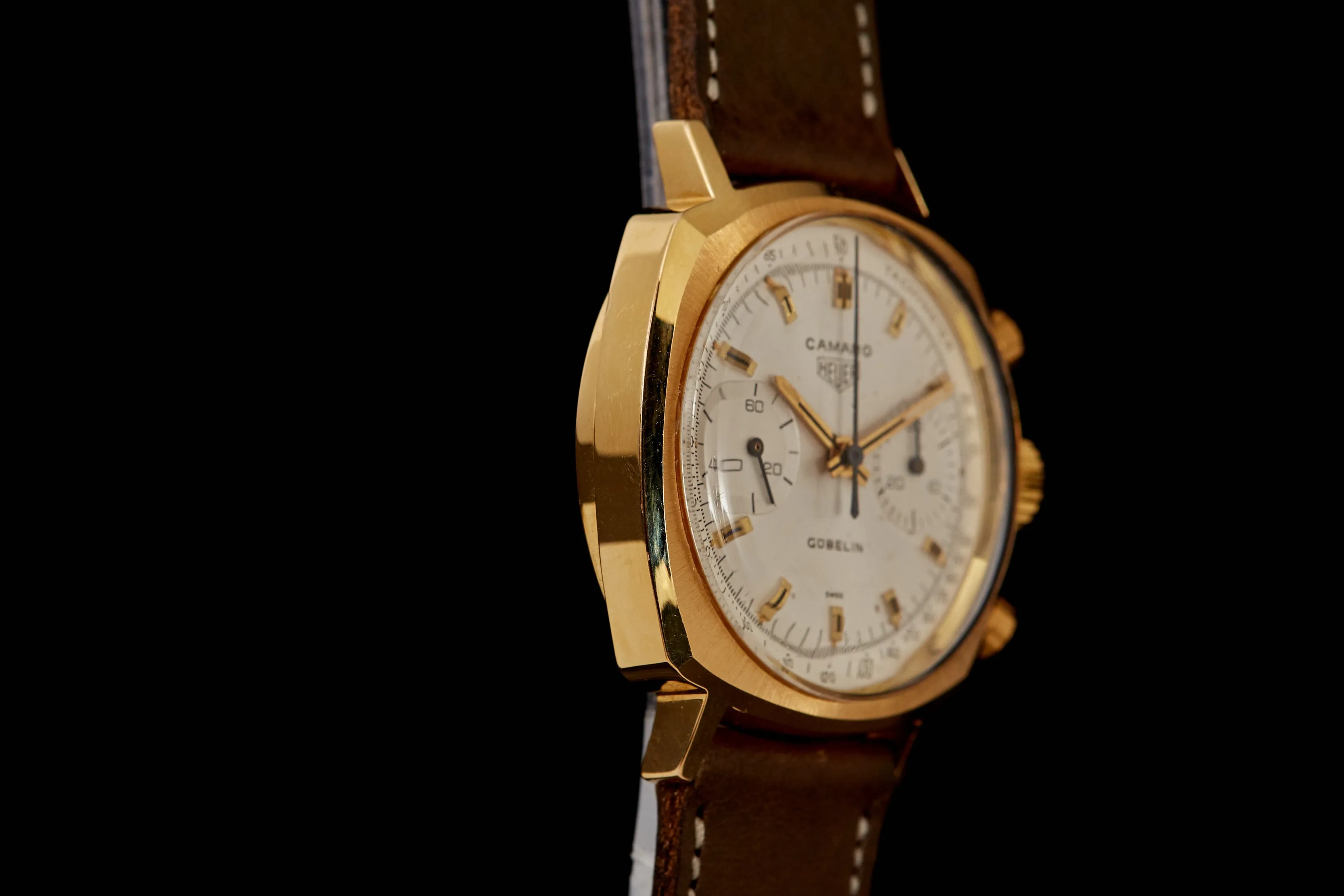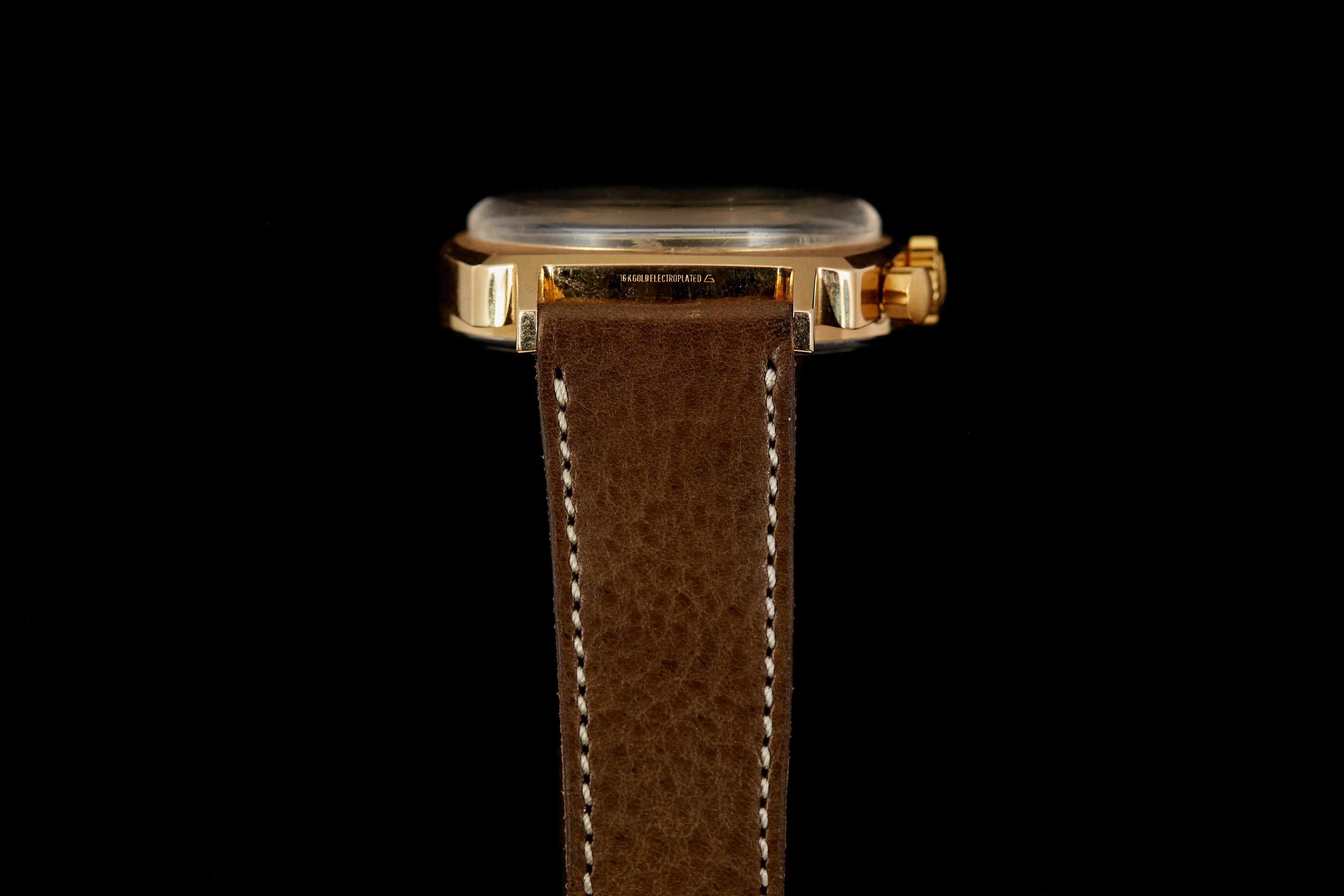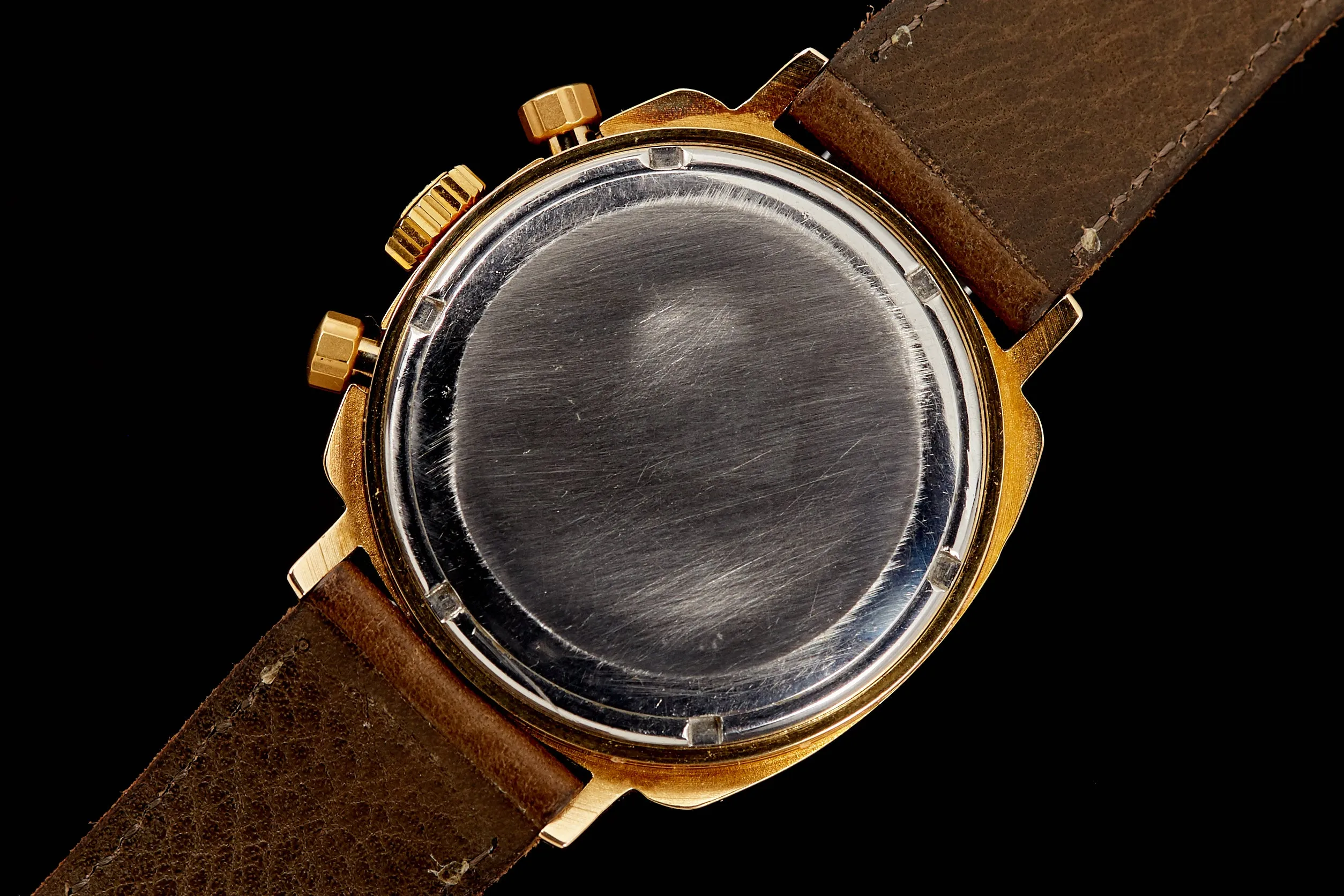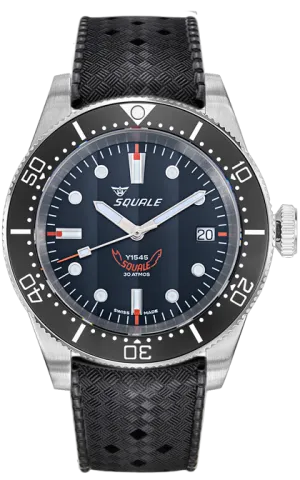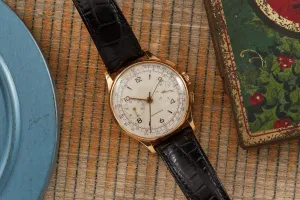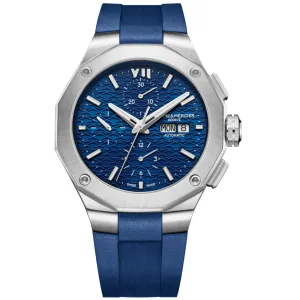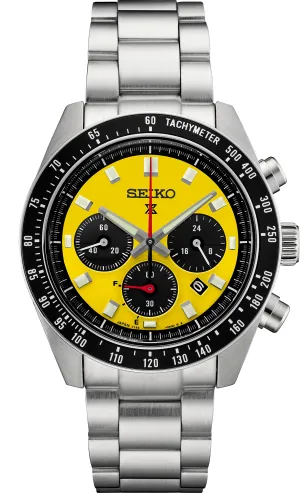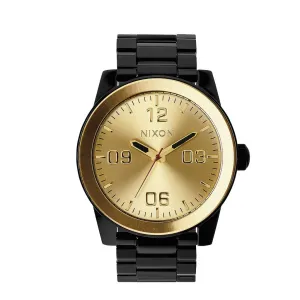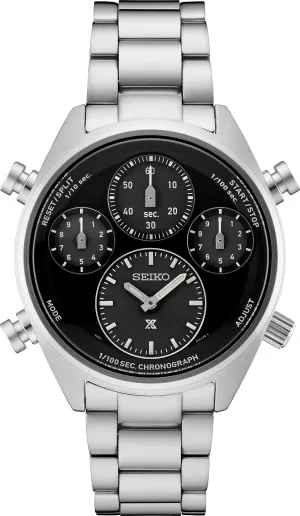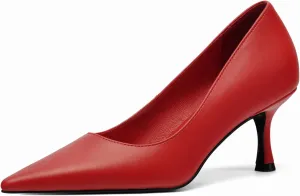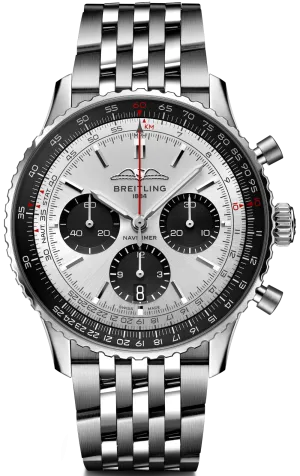Why We Love It
The Heuer Camaro has a small and dedicated group of fans. We count ourselves very much in that camp.
No matter how many we see pass through our doors, each one gets us just as revved up as the last. But there’s something special to be said about the Camaro we offer here.
A Reference 73345, this particular example features a gold plated case with virtually no signs of wear or polish to its factory-brushed finish. Powered by a manually-winding Valjoux 7733, this two-register chronograph is fitted with silver sunburst dial with a retailer signature from the Swiss luxury brand Gübelin, indicating that it was most likely sold in its home market between 1968-1972.
We've had a LOT of Heuer Camaros come through our doors - we're always on the hunt for quality examples. But this is only the second example we've ever had with a double signature - and the first from Gübelin.
There's no telling when or if we may ever see another, so if you're as much a fan of these quirky, cool, and incredibly comfortable sporty chronographs, you know what to do.
The Story
“What is a Camaro?”
“A small, vicious animal that eats Mustangs.”
With these words, Chevrolet introduced the Camaro to the press in 1966. As these words suggest, the Camaro was meant to be Chevy’s answer to the Ford Mustang. While Chevy’s previous car, the Corvair, was a rear-engine design that was boxy and compact, the Camaro was built on the same body as the Pontiac Firebird and had the same front-engine drive as the Mustang.
Though at first glance the Camaro fit the bill of a “pony car” like the Mustang, its long lines terminated in unexpected curves, resulting in something that looked different from anything else available on the market.
Heuer launched its own Camaro in 1968. As something of an outlier when compared to the automatic chronographs Heuer would release the following year, the Camaro lived very much in the shadows. It had one of the shortest production runs of all the models, only a few short years, which led to its relative rarity today.
However, rather than detract from the Camaro’s desirability, its relative obscurity only increases it in our eyes.
It has a distinctive style, made evident in the case: a softened cushion with straight lugs. Thinner (and much more comfortable on the wrist) than Heuer’s “other” square chronograph, the Monaco, the Camaro wears larger than its 37mm would suggest. Moreover, the variance of finishing—polishing on the sides, brush finishing on the top—makes it visually arresting from any angle.

